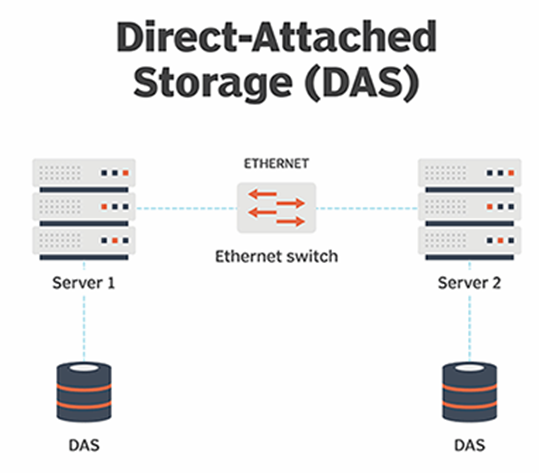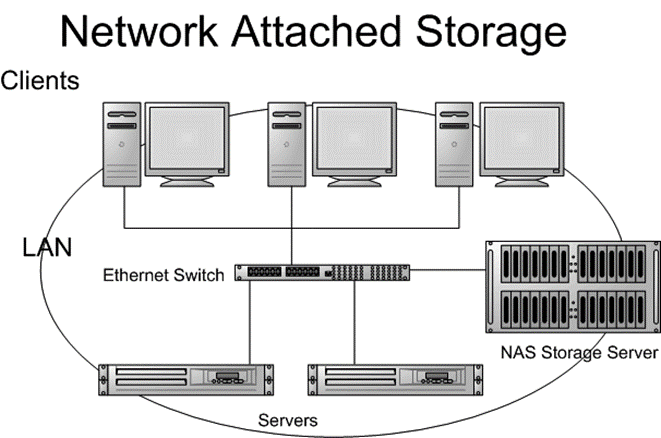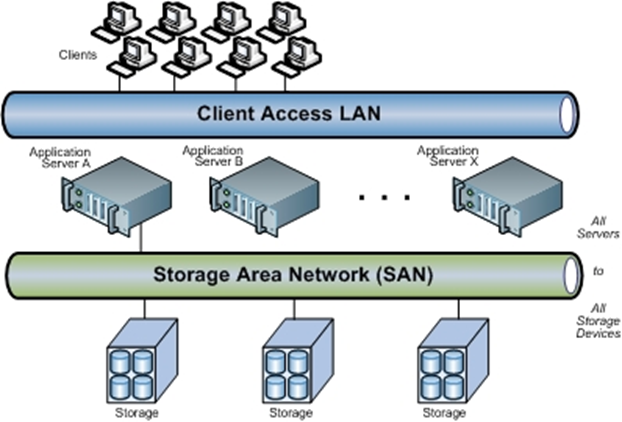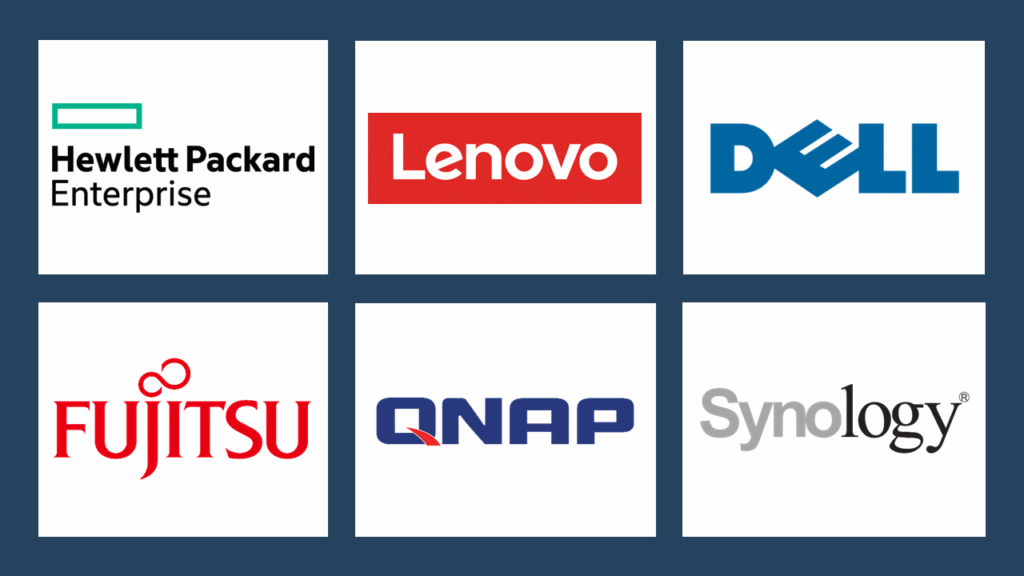Introduction to storage technology
Along with the development of Information and Communication Technology (ICT) and the explosion of data, a need arises for the safe and efficient storage and preservation of data. Modern data storage solutions have been introduced to meet the demands of users.
Due to the continuous increase in data volume, there is a growing demand for performance, stability, and data availability. Storage has become crucial, not only in terms of providing high-capacity storage devices but also in terms of management, sharing, backup, and data recovery in all scenarios.
To store data, various devices and technologies can be used. Data repositories can utilize hard drives, tape drives, optical discs, etc. The choice of technology and device depends on the specific requirements of the problem at hand. Based on the storage mechanism, there are several basic types of data storage as follows:
Types of storage
According to the method of constructing a storage system, the storage is divided into 3 types.
– DAS (Direct Attached Storage): storing data through directly attached devices.
DAS (Direct Attached Storage) is a storage mechanism where devices are directly attached to the server. This is considered a traditional storage technology used by many businesses. With the DAS mechanism, each server will have its own storage system and separate storage management software.

– NAS (Network Attached Storage): storing data into storage devices through IP network.
NAS (Network Attached Storage) is a method of storing data using specialized storage devices directly connected to the LAN network as a regular network device (like a computer, switch, or router).
NAS devices are also assigned fixed IP addresses and accessed by users through server control. In some cases, NAS can be accessed directly without server management.
In a multi-operating system environment with multiple servers, data storage, backup and recovery, management, and application of security policies are all performed centrally.

SAN (Storage Area Network) is a dedicated high-speed network used for transmitting data between servers participating in the storage system as well as between storage devices themselves. SAN enables centralized management and provides the ability to share data and storage resources. Most SAN networks today are based on fiber channel technology, providing users with scalability, performance, and high availability.

– Cloud Storage: storing data in cloud.
Cloud storage is a cloud computing model that allows storing data and files on the Internet through a cloud computing service provider that you access via public Internet or dedicated network connection. The storage service provider manages and maintains storage servers, infrastructure, and network securely to ensure you have access to data when you need it at virtually unlimited scale and flexible capacity. Cloud storage eliminates the need to purchase and manage on-premises data storage infrastructure, providing flexibility, scalability, durability, and anytime, anywhere data access.
The benefits of using storage solutions.
- Increased readiness: The data storage solution is designed to operate continuously and reliably. It can be configured to automatically restart after hardware or software failures.
- Resource sharing: The data storage solution can be configured to store and share resources such as data, applications, and devices among multiple users and different devices.
- Improved performance: The data storage solution can be configured to perform computations and process data for multiple users and different devices. This helps improve performance and reduce response time.
- Security: The data storage solution can be configured to protect data and applications against security threats using security technologies such as firewalls, encryption, and access control.
Vendors supply the storage solution

Các lợi ích của việc sử dụng giải pháp lưu trữ
- Tăng tính sẵn sàng: Giải pháp lưu trữ dữ liệu được thiết kế để hoạt động liên tục và đáng tin cậy. Nó có thể được cấu hình để tự động khởi động lại sau khi xảy ra lỗi phần cứng hoặc phần mềm.
- Chia sẻ tài nguyên: Giải pháp lưu trữ dữ liệu có thể được cấu hình để lưu trữ và chia sẻ tài nguyên như dữ liệu, ứng dụng và thiết bị giữa nhiều người dùng và thiết bị khác nhau.
- Tăng hiệu suất: Giải pháp lưu trữ dữ liệu có thể được cấu hình để thực hiện tính toán và xử lý dữ liệu cho nhiều người dùng và thiết bị khác nhau. Điều này giúp tăng hiệu suất và giảm thời gian phản hồi.
- Bảo mật: Giải pháp lưu trữ dữ liệu có thể được cấu hình để bảo vệ dữ liệu và ứng dụng trước các mối đe dọa bảo mật bằng cách sử dụng các công nghệ bảo mật như tường lửa, mã hóa và kiểm soát truy cập.
Hãng cung cấp giải pháp lưu trữ tiêu biểu



 Vi
Vi